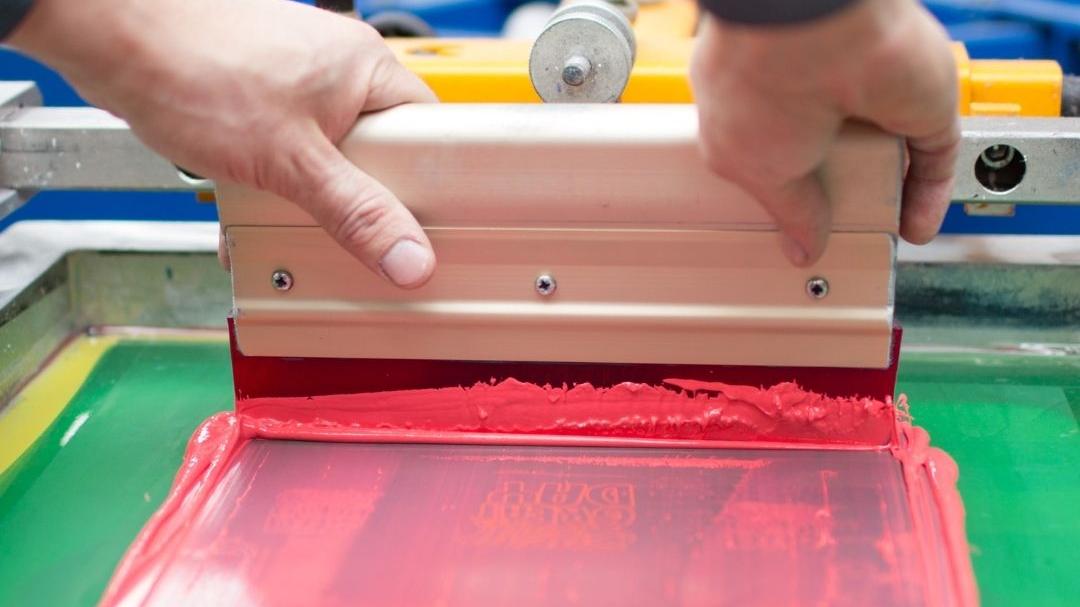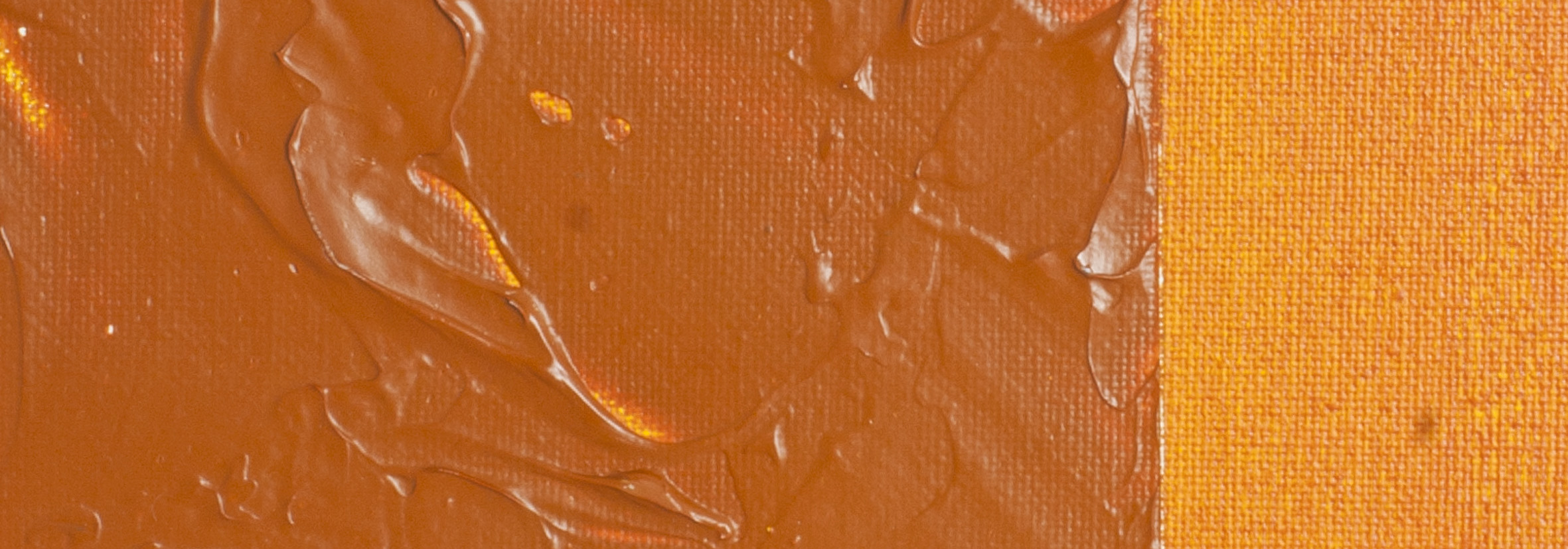Silk screen printing essentially involves "pushing" ink through a screen over a stencil.
Silk screens were originally made, as the name suggests, from silk cloth. By and large, they are now made from synthetic materials, however the process remains the same.
The cloth or mesh is stretched over and fixed to a frame (usually wood, sometimes plastic or aluminum). This forms what is known as the screen (example below).

Ink is dragged across the screen with a stiff piece of rubber known as a squeegee. As the ink is dragged across the screen, it is pushed through the holes between the fibres of the screen and onto the surface below. The amount of ink deposited on the surface is largely determined by the mesh size of the screen (the mesh size refers to the number of holes per square inch).
A stencil is used to block out areas where the colour is not wanted. This stencil can be as simple as a piece of paper or plastic with a design cut out of it or, if longer print runs are required (paper stencils are generally only good for a few prints), special block out solutions are used. "Blockouts" come in several different forms. Some are cut out of a special type of plastic and require solvents to "melt" this to the screen. Some are brushed directly on to the areas to be blocked out. Some systems of "blockout" are photosensitive and can be developed under sunlight using positive transparencies, while some are developed not unlike photographs. Each form of "stencil" has its merits and limits. Some systems are water-soluble which means using acrylics may destroy them.
Traditionally, screen inks have been oil- and solvent-based which normally involves the use of expensive exhaust units to remove the fumes (not to mention the harm the solvents do to the environment). Clean-up requires more solvents producing more dangerous waste. Printing with Matisse Colours, however, is much easier and more environmentally friendly: they are water-based, non-toxic, and wash up in water, with no sacrifice of quality.
Silkscreen system
It is important to make sure the silkscreen Blockout or stencil system that is to be used is compatible with water-based products (some are completely resistant to many solvents but water will destroy them).
Mesh Size
It is possible to use extremely fine screens for high-definition work. Screens of mesh size 70T to 90T (700-900 holes per inch) monofilament will produce the best results with the print paste.
Printing on paper
Matisse Colours are perfectly suited to silk screen printing on paper directly out of the jar. Matisse Structure Formula is a thick-bodied paint that adapts nicely for printing.
The first thing the artist will notice when using acrylics for silk screen printing is their quick drying time. This, coupled with the fact that only a thin layer of paint is left in the screen after each print, can lead to the paint drying in the screen. Acrylics dry water fast so they cannot be removed. One way to avoid "drying in the screen" is to use MM1 Drying Retarder which will slow the drying time of the paint and allow the screens to be washed out more easily.
MM22 Print Paste
Main article: MM22 Print Paste.
This is designed to be used in conjunction with the Matisse colours. The advantages of using print paste with the acrylics are:
-
There is no need to buy a second set of colours for silk screen printing on paper. Just add the print paste to your existing acrylic range to produce a range of printing inks.
-
The addition of the print paste slows the drying time of the acrylics allowing the screens to be washed out easily.
-
The print paste allows reduction of the colours to achieve transparent layering and brilliant, bright colours.
-
The use of print paste with the acrylics also means that there are no toxic fumes to be dealt with and no waste solvents. Everything can be washed up in water and the waste poured on the garden.
Method
Start by mixing thoroughly equal parts of print paste and acrylic. As different colours will have different rates of opacity, each colour may require a different ratio of print paste.
This mixture can be stored for many months in an airtight container. However, do not put leftover ink back in the container as this may cause contamination. Brilliant transparent prints can be achieved using small amounts of paint with the print paste.
If a longer drying time is required, it is possible to add up to 5% MM1 Drying Retarder to the mix. This should only be necessary in the driest of climates.
Clean up
Wash up in lukewarm water with soap if necessary. If the ink dries on the screen, soak the screen overnight in soapy water and using a soft brush, clean the screen. The ink should dissolve easily.

To install this Web App in your iPhone/iPad press ![]() and then Add to Home Screen.
and then Add to Home Screen.

